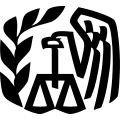New 1099 Rules for 2011 - Do They Affect You?
Form 1099 until recently has always been used to report various odd payments. Examples of these include interest, dividends, income from pensions and payment to non-employee labor. Various forms fall within the 1099 series including 1099-B, 1099-DIV, 1099-INT, 1099-R and the most often used 1099-MISC. The original intent of the 1099 series was to track off-payroll employment. This has changed considerably with the new 1099 rules for 2011.
The Time Frame
The 1099 rule changes took effect for tax year 2012 although the changes in record keeping began on January 1, 2011. As of March 2011 no exemptions or grace periods had been worked into the rules by the IRS. Up until this time the general purpose of the 1099 series was reporting payments for fees, interest earned, dividends and any payments to independent contractors or freelancers.
1099-MISC
The largest group of taxpayers affected by the new 1099 rules for 2011 use Form 1099-MISC; this is the catch-all form of the series. The main bulk of the group is comprised of small business owners. Once used primarily to report payments to independent contractors or freelancers working on individual projects, the 1099-MISC has taken on a much greater burden. With the new laws any payment of $600 or more for services or products to any one provider during a calendar year must be reported via 1099. This means that not only do miscellaneous payments need to be reported but any purchases over $600 from a single vendor must also now be reported.
1099-K
The 1099-K first appeared with the Housing Assistance Tax Act in 2008 according to a May 21, 2010 CNN/Money article. The importance of the 1099-K took on new meaning with the new rules for the 1099 series. 1099-K is required for merchants with a minimum of 200 transactions per year totaling over $20,000. This not only includes credit card providers but also payment processors such as Paypal, Money Bookers, Amazon and ING.
According to the CPA firm Baker, Newman, Noyes processors of credit card transactions triggering the rules above must provide a detailed transaction report for both the merchant and the IRS. This new rule came into effect on January 1, 2011 and affects both online and brick-and-mortar payment processors. Sellers who use sites such as eBay, Amazon and similar sites are now required to supply those sites with an EIN or TIN number.
1099-B
Another of the new 1099 rules for 2011 involve income generated from the sale of securities. According to Baker, Newman, Noyes the cost of the securities sold along with their time frame (long or short term) has become a required part of the 1099-B; previously it was optional and not reported to the IRS. This change requires you to keep close communication with your broker to ensure the appropriate records and accounting are kept.
Landlords
One of the major changes involves landlords and how they report expenses. The Journal of Accountancy states that as of 2011 landlords became classified as business owners by the IRS. This reclassification brought owners of rental property under the new 1099 rules for 2011. This connection requires landlords who make payments greater than $600 in a single year, to any service provider, in the course of earning income from rentals to send a 1099-MISC to both the provider and the IRS.
This new requirement also triggers the need for landlords to obtain information from service providers via Form W-9. This includes the providers TIN, address and business name.
According to Baker, Newman, Noyes exemptions for “minimal amounts of rent” and when the new requirements cause hardship were written into the law by Congress; the IRS was given the role of defining what requirements were needed to meet these exemptions. As of March 2011 those requirements had yet to be created or clarified.
Penalties
Penalties increased as part of the new 1099 rules for 2011. Penalties for each of the three tiers doubled from previous amounts reported the Journal of Accountancy. Tier one increased to $30, tier two increased to $60 and tier three increased to $100. Calendar year maximum penalties also increased substantially. First-tier maximums raised to $75,000 from $25,000; second-tier maximums rose to $200,000 from $50,000; third-tier maximums went from $100,000 to $500,000.
While the new rules greatly expanded the role of the 1099 series, they did not change one basic premise – payments to a single recipient under $600 fall outside of reportable limits. Another basic rule concerning filing also remained; when a trigger amount is reached it does not need to be reported until the following tax year, and only if the expense is related to business purposes.
References:
Baker, Newman, Noyes Certified Public Accountants -New 1099 Form Requirements
“New Rules Require Rental Property Owners to Issue 1099s”; Journal of Accountancy; November 11, 2010
“Stealth IRS Changes Mean Millions of New Tax Forms”; CNN/Money; May 21, 2010
Image Source: Wikimedia Commons
